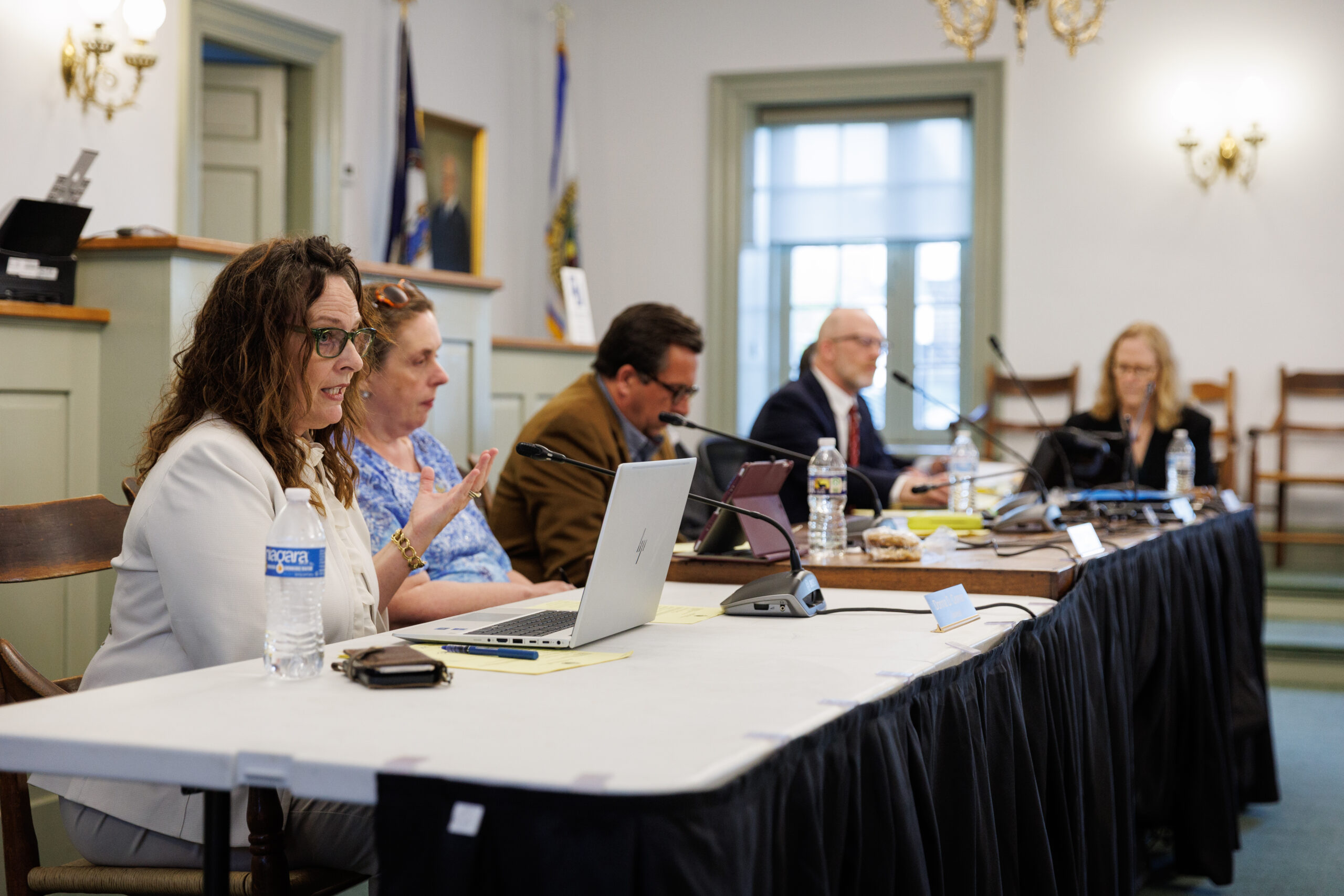County’s restaurant owners elated
In an unanticipated turnaround Monday, the Rappahannock County Board of Supervisors voted down a proposal to raise the county meals and lodging tax from 4% to 6%.
The 3-to-2 vote to keep the current rate drew the county’s divisive 10-week budget drama to a close, and delighted a coalition of restaurant owners, who were all but resigned to a tax increase that they said would hurt business.
“It was absolutely a complete surprise,” said an ebullient Kerry Sutten, owner of Before & After and Firth River cafes in Sperryville.
The key vote was cast by the board’s newest member, Jackson Supervisor Donna Comer, who at the final moment joined Hampton Supervisor Keir Whitson and Piedmont Supervisor Christine Smith in opposing the tax hike.
This year’s protracted budget drama centered on two passionately committed citizen groups: one fought for fully meeting the Rappahannock County Public Schools’ request for $10.9 million in local funding, even if it required tax increases; the other, anticipating economic stress as tariff wars and government cutbacks take hold, implored the supervisors to avoid taxes that could add to the burdens residents will have to shoulder.
The end result is a mix.
Though meals and lodging taxes will hold steady at 4%, property taxes will rise one penny to 56 cents per $100 of assessed value. The levy covering fire and rescue operations also will rise by one penny to seven cents from six. A string of smaller taxes, including a new cigarette tax, will bring in needed revenue to support the schools and other priorities.
The Rappahannock County Public Schools, for their part, won’t pull in the $10.9 million they asked for, but will receive $10,561,192 from the county for regular operations, plus a special $300,506 provision to purchase two school buses. For the current fiscal year, which ends June 30, the schools are budgeted to receive $10 million. The schools’ funding squeeze stems in part from the state’s formula for distributing education support; despite repeated efforts to amend the arrangement, Virginia’s General Assembly has stuck to an approach that disadvantages small, rural jurisdictions like Rappahannock.
Meanwhile, the state has mandated salary increases and health insurance expansions across all jurisdictions without providing funds to cover the increased outlays.
The overall budget adds up to $32,169,917 for the fiscal year beginning in July, up from $30,136,027 in the current fiscal year. By dropping the hike in meals and lodging levies, the supervisors forgo about $280,000 in revenue. The county is required to present a balanced budget, and for fiscal year 2026, this week’s decision leaves a shortfall that will be filled by drawing on the county’s general fund balance.
The supervisors generally try to avoid covering recurring expenses by pulling from reserves, but Whitson noted, “We have a strong cash position of about $11 million in the bank, which is quite a bit higher than the $5 million that would be generally recommended” for a local budget the size of Rappahannock’s.
Supervisors also hope that as the budget year unfolds, scattered savings and revenue increases will largely make up for the lost revenue. “It’s a calculated risk,” said Smith, “but we’re betting on ourselves.” Comer, in swinging the vote to jettison the meals and lodging increase, weighed the pressures: “There’s never a good time to raise taxes, but it bothers me to hit the general fund.” But like Smith, she said she is counting on a search for savings that might offset the loss in revenue. “We have to start now,” she added.
Skirmish between town and county
The budget process was complicated by an eleventh-hour skirmish that erupted between the county and the Town of Washington, the county seat, when Whitson suggested that the town raise its meals and lodging tax to 4% from the current 2.5%, and steer the added revenues to the county. The stakes are high because the town’s acclaimed Inn at Little Washington generates about $650,000 in meals and lodging taxes annually— all of which flow to the town. That’s well above the county’s projected meals and lodging intake of $560,000.
Joe Whited, Washington’s mayor, dismissed Whitson’s idea, and in a sharply-worded letter to this newspaper signed by Whited and his two predecessors, Fred Catlin and John Fox Sullivan, argued that the inn, the largest employer and biggest private company in the county, “is driving not just the economic activity of the town but the whole county.” In a public hearing Monday, Sullivan pointed out that the inn pays sales taxes to the State of Virginia, which returns part of the inflow to the county.
Rappahannock’s budgeteers expect future planning sessions will only grow more fraught.
“Nothing at the schools will get cheaper,” said Stonewall-Hawthorne Supervisor Van Carney, who will join Smith in stepping down from the Board of Supervisors after this year.
Beyond the schools, the county expects to take on a debt-service burden taxpayers will have to support to pay for a new courthouse complex. After weeks of hammering out savings in the planned structure, architects brought the cost to $23.2 million from an earlier estimate of $24.7 million. Elsewhere, fire and rescue operations are turning to paid staff as volunteers age out and retire.
Speaking after the final budget was formally adopted, Washington’s former mayor Sullivan remarked, “This county is going to need more revenue. You just can’t run away from it.”




